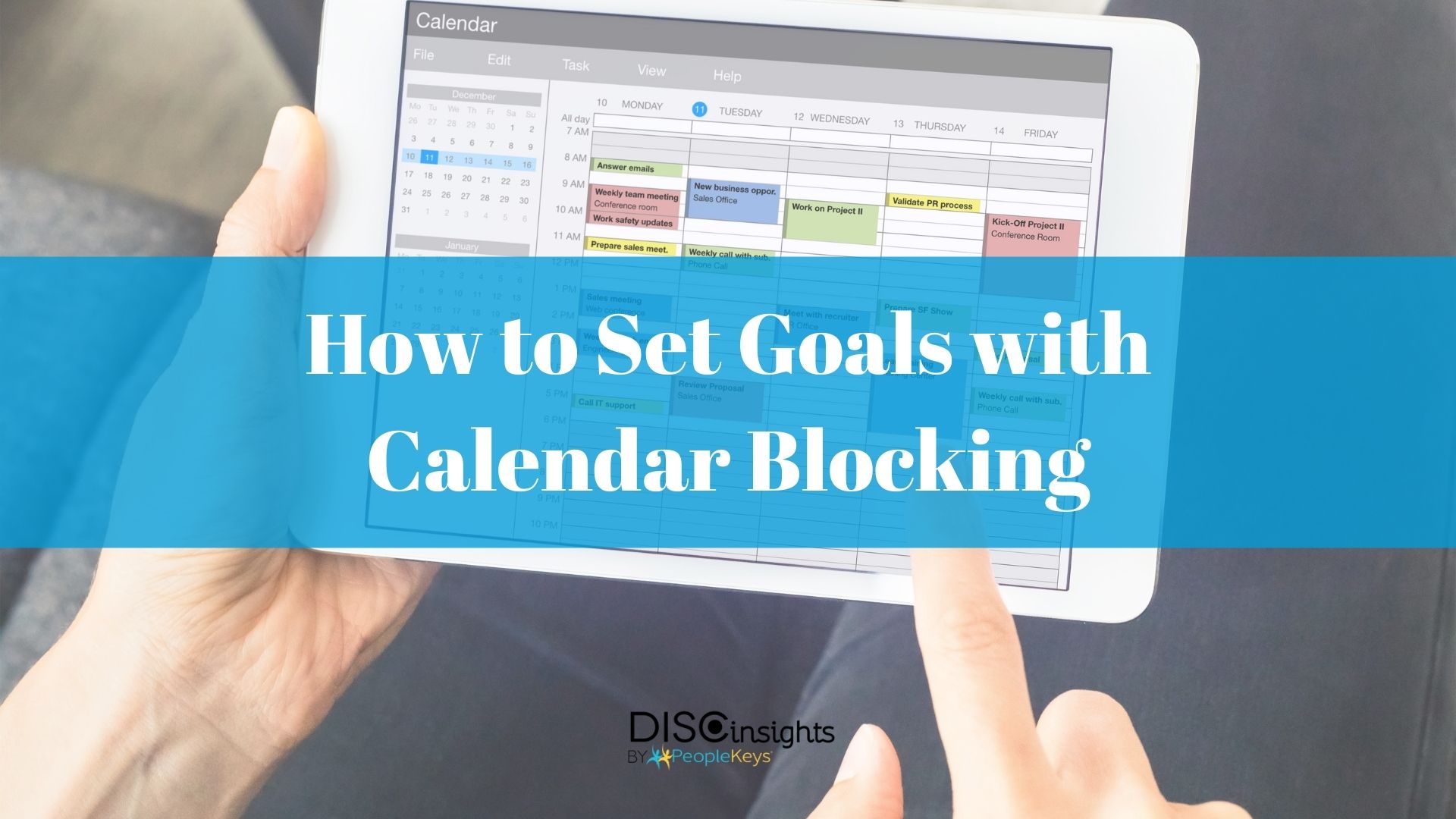- SHOP BY PRODUCT
- DISC TRAINING & CERTIFICATION TOOLS
- DISC RESOURCES
- BLOG
- SHOP BY PRODUCT
- DISC TRAINING & CERTIFICATION TOOLS
- DISC RESOURCES
- BLOG
- ALL ITEMS



Studies show those individuals who set goals will achieve overall better results than those individuals who do not set goals. However, only 3% of the population set goals with measurable tasks on a list. I myself like to start my day with a list – anything from putting gas to my car to paying a bill. If it needs to be done, then it’s probably there.
A to-do list can be really long, and when you look at everything it can get really intimidating, really fast. Calendar blocking can help with scheduling a to-do list to make sure you stay on task. Although I’d love to take credit for this idea, I didn’t come up with it. Amy Landino also explains it well in this video.
In simple terms, calendar blocking is when you take your combined calendars of work and other activities and fill your free time with tasks on your to-do list. If you don’t have a to-do list, I suggest you read how to make the perfect to-do list.
To stay a little more organized it helps to know what DISC personality style you are. Take this DISC assessment first to know what style you identify best with. If you’re an "S" or "C" style you may love the idea of a list, but if you’re a "D" or "I" style you may not be the best at staying on-task. Either way, it will help to learn a new way to organize your list of tasks and design practical objectives for implementing your goals.
If you want to manage your life a little more easily, read these tips on calendar blocking:
First, you have to know what needs to be done. Write down everything from simple tasks to big projects and make sure to figure out how much time each item may take. If you’re not sure, make sure to guess a larger amount of time than might be necessary. This will make plugging it into your schedule easier.
I’ve tried a digital calendar, such as Google Calendar, but I find it too easy to procrastinate on a task when I can switch times to do things with the simplicity of clicking a few buttons. I now use an agenda and separate the hours. You can also find an agenda that already has the hours listed.
If you know you work a 9 a.m. to 5 p.m. shift make sure to block out that time. The same goes for times to pick up and drop off children or other tasks that normally don’t change.
Will it matter if you unload your dishwasher at 5? Probably not. Will your family want you to make dinner before 6? Probably. Just use some common sense when setting your schedule.
If you finish an item early, try to have something that isn’t time-sensitive to do next so you can accomplish more.
You will burn out if you don’t have any time to relax.
Things change, transportation might be late, and emergencies can happen. Don’t fret when you have to switch around a few things and be prepared for those delays.
Try to stick with your schedule. There is a big difference between having an inconvenience happen and causing your own.
It’s pretty easy to let your mind drift so be sure to know if you’re working on something to stay on-task and not let your wandering mind get the best of you.

© PeopleKeys. All Rights Reserved
WORKING DAYS/HOURS
Mon - Fri / 8:30AM - 5:00PM EST
